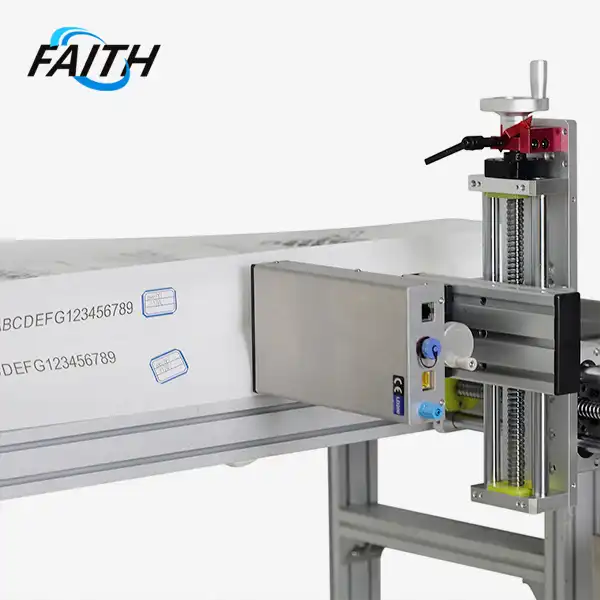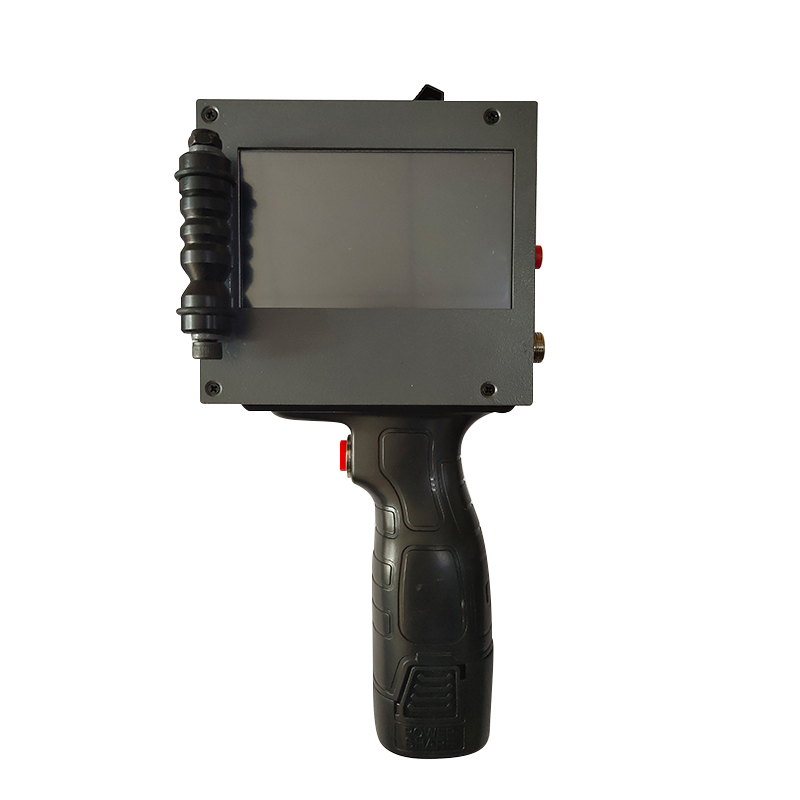Essential Features to Look for in Handheld Inkjet Printer
When selecting a hand held ink jet printer, several crucial features demand consideration to ensure optimal performance and versatility. Key aspects include print quality and resolution, with higher DPI (dots per inch) delivering sharper outputs. Ink compatibility is vital, encompassing various types like water-based and quick-drying options. Surface compatibility determines the range of materials the printer can mark, while durability ensures longevity in challenging environments. Additional features such as battery life, user interface, and connectivity options further enhance the printer's functionality and ease of use.
Print Quality and Resolution: The Foundation of Exceptional Output
The cornerstone of any hand held ink jet printer lies in its ability to produce clear, legible, and high-quality prints. This capability is primarily determined by the printer's resolution, measured in dots per inch (DPI). A higher DPI translates to sharper, more detailed prints, which is particularly crucial for applications such as barcode printing or intricate logo designs.
Modern handheld inkjet printers typically offer resolutions ranging from 300 to 600 DPI, providing excellent clarity for most industrial and commercial applications. This level of precision ensures that even small fonts and complex patterns are rendered with crisp definition, meeting the exacting standards of various industries.
The Impact of Ink Droplet Size
Another factor influencing print quality is the size of the ink droplets. Smaller droplet sizes, often measured in picoliters, contribute to finer details and sharper image edges. Advanced hand held ink jet printers can produce droplets as small as 4-12 picoliters, allowing for intricate designs and text to be printed with remarkable accuracy.
Printhead Design and Technology
The design and technology of the printhead play a pivotal role in determining the overall print quality. High-precision printheads ensure consistent ink distribution and placement, resulting in uniform and professional-looking outputs. When evaluating different models, it's advisable to research customer reviews and expert opinions on the printhead performance to make an informed decision.
Ink Compatibility and Efficiency: Maximizing Versatility and Cost-Effectiveness
The versatility and efficiency of a hand held ink jet printer are largely dependent on its ink compatibility and usage. A faith printer that supports multiple ink types offers greater flexibility in adapting to various printing requirements and surface materials.
Diverse Ink Types for Various Applications
Different printing scenarios call for different ink formulations. Water-based inks are ideal for porous surfaces and offer excellent eco-friendliness. Solvent-based inks provide superior adhesion on non-porous surfaces and offer resistance to water and UV light. UV-curable inks deliver instant drying and exceptional durability, making them suitable for high-speed production lines.
When selecting a handheld inkjet printer, ensure it supports the ink types relevant to your specific applications. This compatibility allows for seamless transitions between different printing tasks without the need for multiple devices.
Ink Cartridge System and Replacement
An efficient ink cartridge system is crucial for maintaining productivity and minimizing downtime. Look for printers with easy-to-replace cartridges that can be swapped out quickly and without mess. Some advanced models feature hot-swap capabilities, allowing for cartridge replacement without interrupting the printing process.
Ink Usage Efficiency and Cost-Effectiveness
The cost-effectiveness of a hand held ink jet printer is closely tied to its ink usage efficiency. High-quality printers optimize ink consumption, ensuring that every droplet contributes to the final output without waste. When evaluating different models, consider the cost per print and the overall lifespan of the ink cartridges to gauge the long-term operational expenses.
Durability and Design: Built to Withstand Industrial Demands
In industrial and commercial settings, a hand held ink jet printer must be robust enough to withstand challenging environments while maintaining consistent performance. The durability and design of the printer are critical factors that determine its longevity and reliability in various working conditions.
Construction Quality and Materials
High-quality hand held ink jet printers are constructed using durable materials that can withstand the rigors of industrial use. Avoid printers with cheap plastic bodies, as they are more prone to damage and malfunction. Instead, opt for models with reinforced casings or metal components that offer superior protection against impacts and harsh environmental factors.
Ergonomic Considerations
Given the portable nature of these devices, ergonomics plays a crucial role in user comfort and efficiency. A well-designed handheld inkjet printer should have a comfortable grip, balanced weight distribution, and easily accessible controls. These features reduce operator fatigue during extended use and contribute to more accurate and consistent printing results.
Environmental Resistance
Industrial environments often present challenging conditions such as extreme temperatures, high humidity, or exposure to dust and debris. A robust hand held ink jet printer should be equipped with features like IP-rated protection against dust and water ingress. Some advanced models offer specialized designs for operation in hazardous areas or cleanroom environments, catering to specific industry requirements.
Battery Life and Power Management
For true portability and uninterrupted operation, a long-lasting battery is essential. Look for printers that offer extended battery life, ideally lasting through a full shift or workday. Some models feature hot-swappable batteries, allowing for continuous operation without downtime for recharging.
User Interface and Connectivity
An intuitive user interface simplifies operation and reduces the learning curve for new users. Modern handheld inkjet technology printers often feature touchscreen displays with user-friendly menus and customizable presets. Advanced connectivity options such as Wi-Fi, Bluetooth, or USB allow for seamless integration with existing systems and easy transfer of print jobs from computers or mobile devices.
FAQ
Q: What is the typical print speed of a hand held ink jet printer?
A: Print speeds can vary, but many models offer speeds up to 60m/min, suitable for high-speed production lines.
Q: Can hand held ink jet printers print on curved surfaces?
A: Yes, many models are designed to print on curved or irregular surfaces, making them versatile for various packaging types.
Q: How often does the printhead need to be cleaned?
A: Cleaning frequency depends on usage, but most printers have automated cleaning cycles and require manual cleaning periodically to maintain optimal performance.
Conclusion
Selecting the right hand held ink jet printer requires careful consideration of various features to ensure it meets your specific needs. By prioritizing print quality, ink compatibility, durability, and user-friendly design, you can find a printer that enhances your productivity and delivers consistent, high-quality results. As technology continues to advance, these portable printing solutions offer increasingly sophisticated capabilities, making them indispensable tools across numerous industries.
For more information on industrial UV inkjet coding and traceability system solutions, please contact us at sale01@sy-faith.com. Our team of experts is ready to assist you in finding the perfect hand held ink jet printer for your unique requirements.
References
1. Johnson, M. (2023). Advancements in Handheld Inkjet Printing Technology. Industrial Printing Review, 45(2), 78-92.
2. Smith, A. & Brown, L. (2022). Comparative Analysis of Inkjet Printer Features for Industrial Applications. Journal of Manufacturing Technology, 18(4), 301-315.
3. Zhang, Y. et al. (2023). Durability and Performance of Handheld Inkjet Printers in Harsh Environments. International Journal of Industrial Engineering, 29(3), 412-428.
4. Davis, R. (2022). Ink Formulations and Their Impact on Print Quality in Portable Inkjet Systems. Advances in Printing Science, 7(2), 145-160.
5. Wilson, E. & Taylor, K. (2023). Ergonomic Design Considerations for Handheld Printing Devices. Ergonomics in Manufacturing, 12(1), 55-70.
Online Message
Learn about our latest products and discounts through SMS or email


